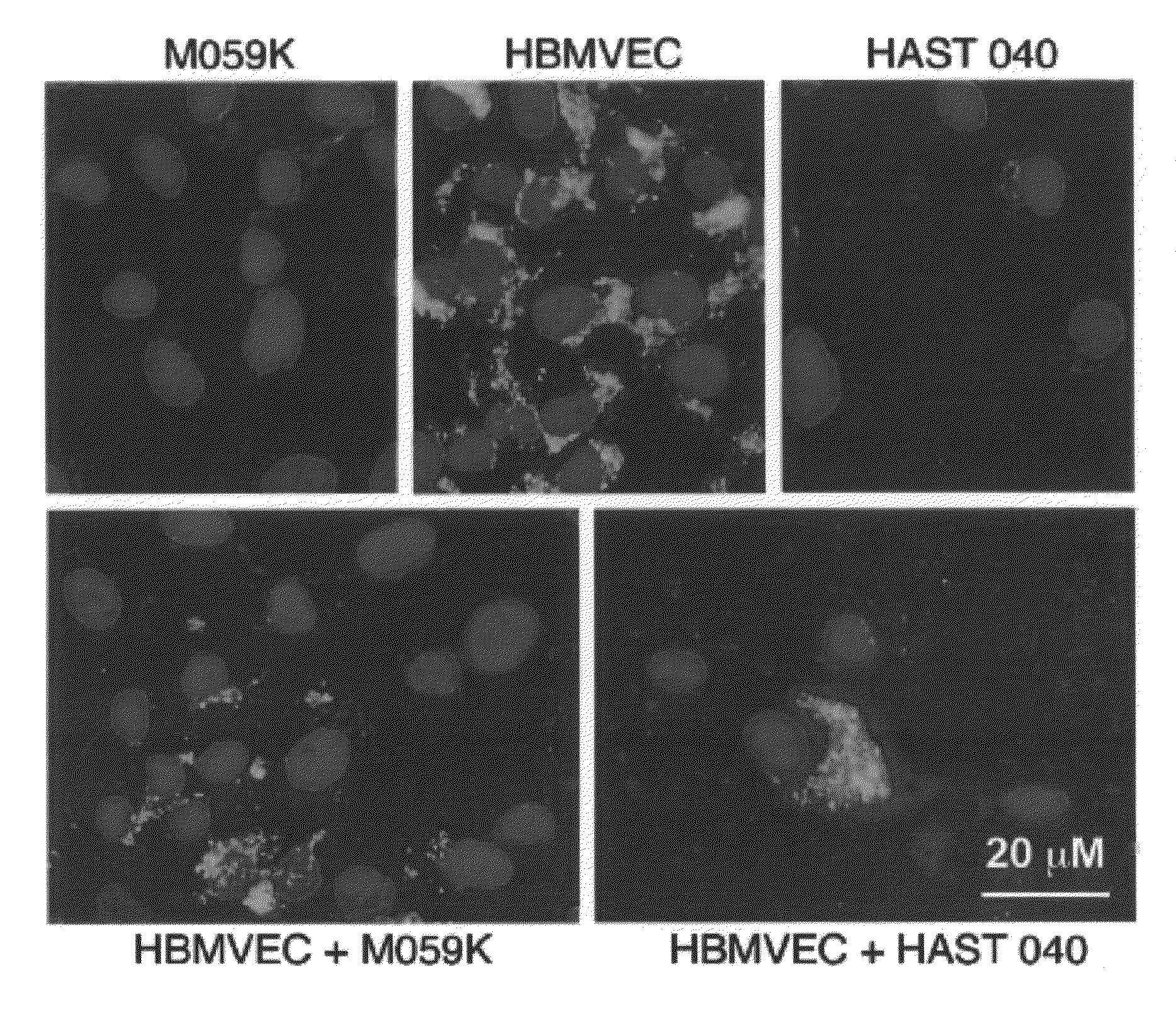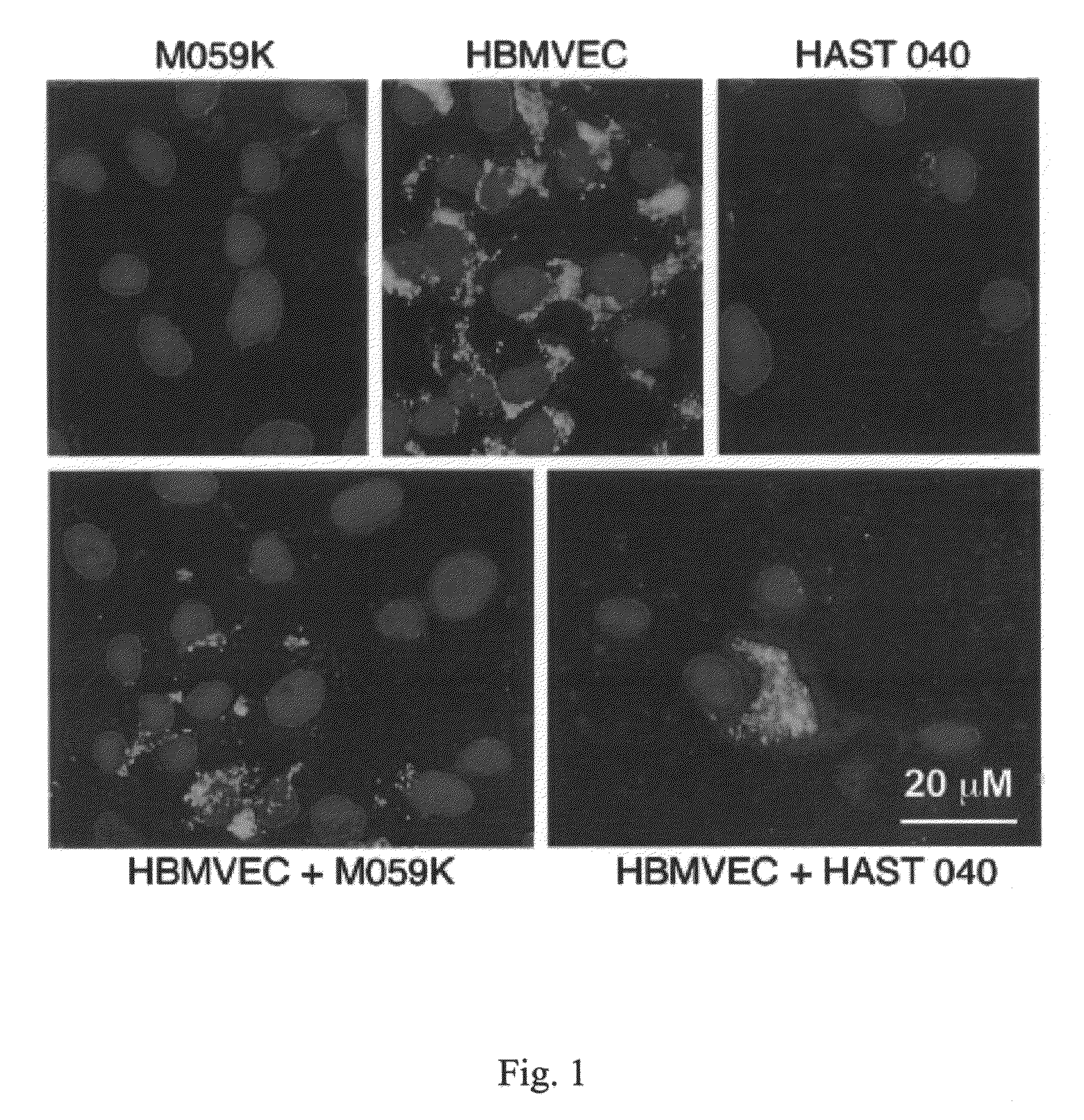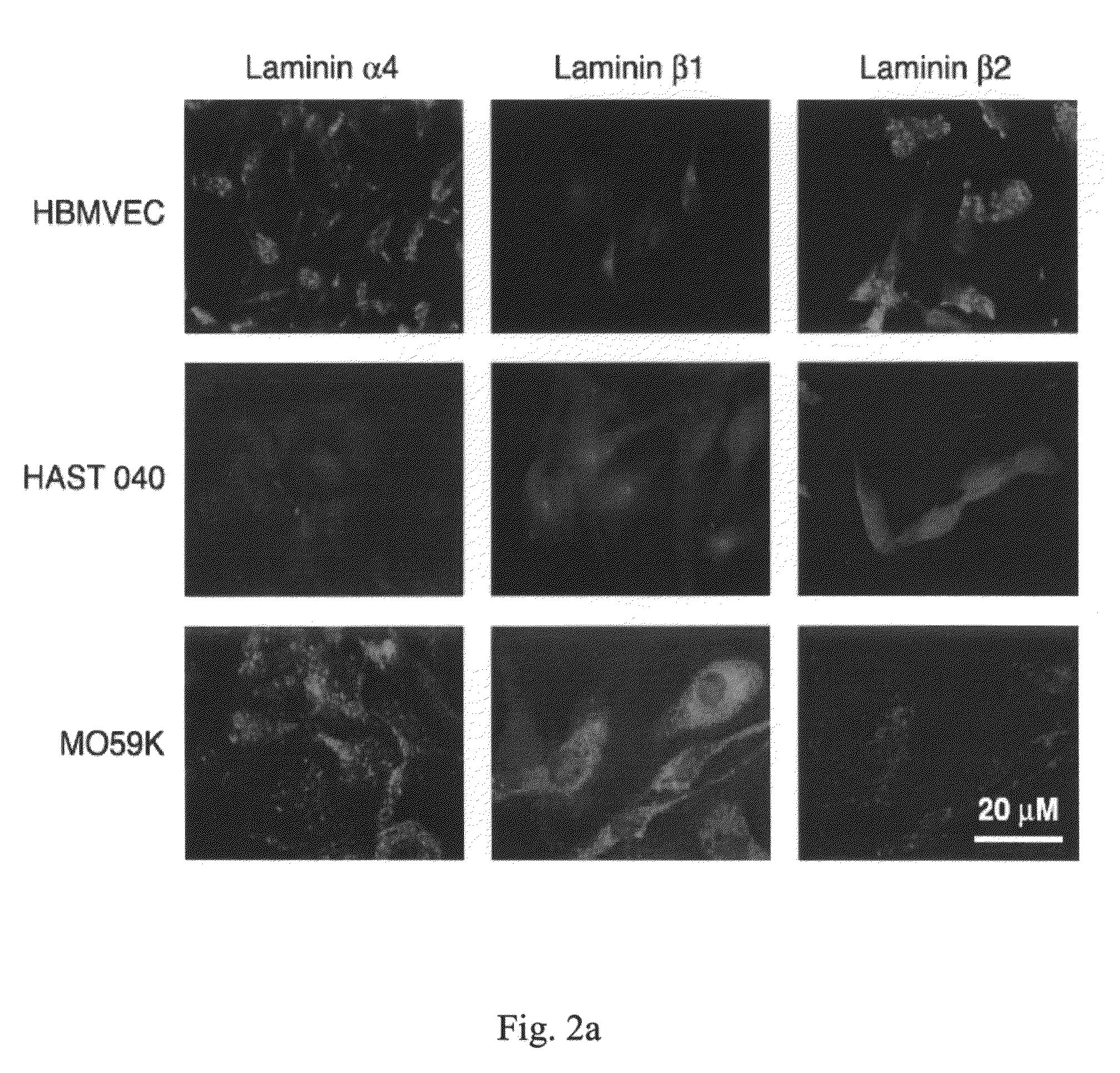Antisense inhibition of laminin-8 expression to inhibit human gliomas
a technology of anti-glioma and laminin-8, which is applied in the direction of biocide, organic chemistry, drug compositions, etc., can solve the problems of not altering existing therapeutic approaches, treatment success rates, or disease outcome prediction, and the majority of gbms is highly invasiv
- Summary
- Abstract
- Description
- Claims
- Application Information
AI Technical Summary
Benefits of technology
Problems solved by technology
Method used
Image
Examples
Embodiment Construction
[0020]Since laminin-8 appears to be associated with GBM recurrence in vivo, we hypothesized that it might play a role in tumor invasion. Because of the complexity of in vivo experiments, we first explored this possibility in vitro using single cultures and co-cultures of brain microvascular endothelial cells, normal fetal brain astrocytes and several GBMs. We sought to analyze whether the patterns of laminin chain expression in cell culture would be similar to those seen in normal brain and in gliomas, and whether inhibition of laminin-8 expression by an antisense approach would alter glioma invasiveness through a reconstituted BM (Matrigel).
[0021]Antisense oligonucleotides (oligos) that bind and inactivate specific RNA sequences may be the best tools for studying gene function, regulation of gene expression, and interactions between gene products. Highly specific antisense oligos that mimic the DNA template for RNA production are used to bind to the complementary RNA and to prevent...
PUM
| Property | Measurement | Unit |
|---|---|---|
| survival time | aaaaa | aaaaa |
| time | aaaaa | aaaaa |
| structure | aaaaa | aaaaa |
Abstract
Description
Claims
Application Information
 Login to View More
Login to View More - R&D
- Intellectual Property
- Life Sciences
- Materials
- Tech Scout
- Unparalleled Data Quality
- Higher Quality Content
- 60% Fewer Hallucinations
Browse by: Latest US Patents, China's latest patents, Technical Efficacy Thesaurus, Application Domain, Technology Topic, Popular Technical Reports.
© 2025 PatSnap. All rights reserved.Legal|Privacy policy|Modern Slavery Act Transparency Statement|Sitemap|About US| Contact US: help@patsnap.com



